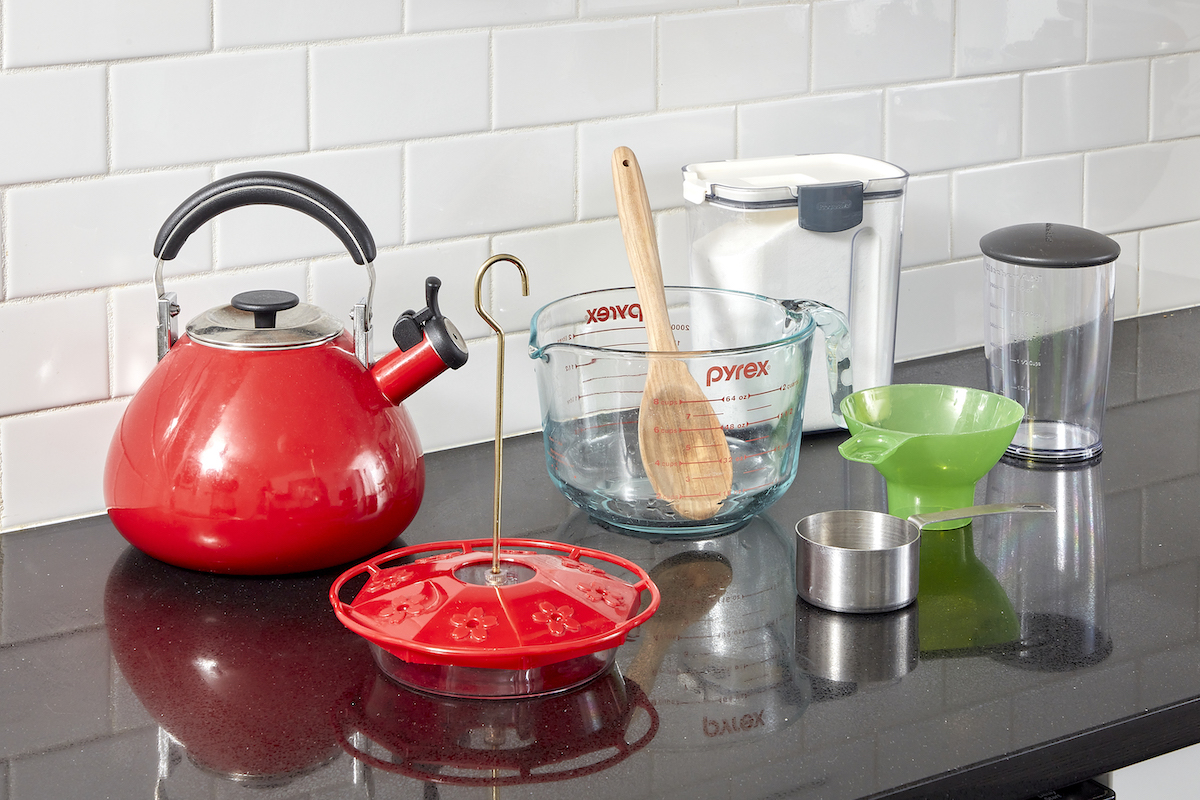

We may earn revenue from the products available on this page and participate in affiliate programs. Learn More ›
Like tiny flying jewels, hummingbirds are a treat to observe zipping, perching, or sipping in your garden. There are around 300 species of hummingbirds, but only a handful venture north of South America and when they do, it’s typically during the summertime. The ruby-throated hummingbird is one of the very few that travels to the eastern half of North America, while in the west, you might see rufous, Costa’s, Allen’s, or black-chinned hummingbirds. Anna’s hummingbird is one of the few hummingbird species that doesn’t regularly migrate and remains year-round in North America, mostly along the Pacific coast.
What do hummingbirds eat?
Although hummingbirds do eat tiny insects and spiders, and also feast on sap and pollen, it’s nectar that makes up the bulk of their diet. Their incredibly fast metabolism is the highest of any animal on earth: A hummingbird’s heart can beat an astounding 1,200 times per minute, their wings can flap over 50 times per second (which is what creates the buzzing or humming sound that gives these birds their common name), they reach speeds of 25 to 30 mph in flight, and their long tongues can dip in and out of a flower or feeder 18 times per second. To maintain their enormous need for energy, the average hummingbird consumes between 1.5 and 8 times its body weight each day in sugar. To match that, you’d need to consume roughly 150,000 calories each day.
The most effective way to draw these nectar-hungry birds to your yard is by planting the flowers they naturally seek out, which are typically tubular-shaped blooms in bright red, pink, purple, or orange. Some hummingbird favorites include lantana, bee balm, foxglove, salvias, lupine, flowering tobacco, petunias, and zinnias. If you don’t have a garden or you just want to admire your feathered visitors up close, consider installing a hummingbird feeder filled with the high-calorie, sugary nectar these birds need to survive.
Learning how to make homemade hummingbird food is simple and economical, particularly if you have a lot of visitors draining your feeders each day. Here’s how to make hummingbird nectar—you’ll never have to buy the premade stuff again!
Tools & Materials
Bobvila.com may earn a commission from purchases made through these links.
Before You Begin
If you live in the eastern half of the U.S., plan on hanging your hummingbird feeders in early May. In the west, aim for April. If you live on the West Coast and regularly spot Anna’s hummingbirds in your area, you can leave your feeders up all year. Elsewhere, take feeders down in late fall so migrating hummingbirds have a spot to refuel before making their journey south.
Step 1: Heat some water.
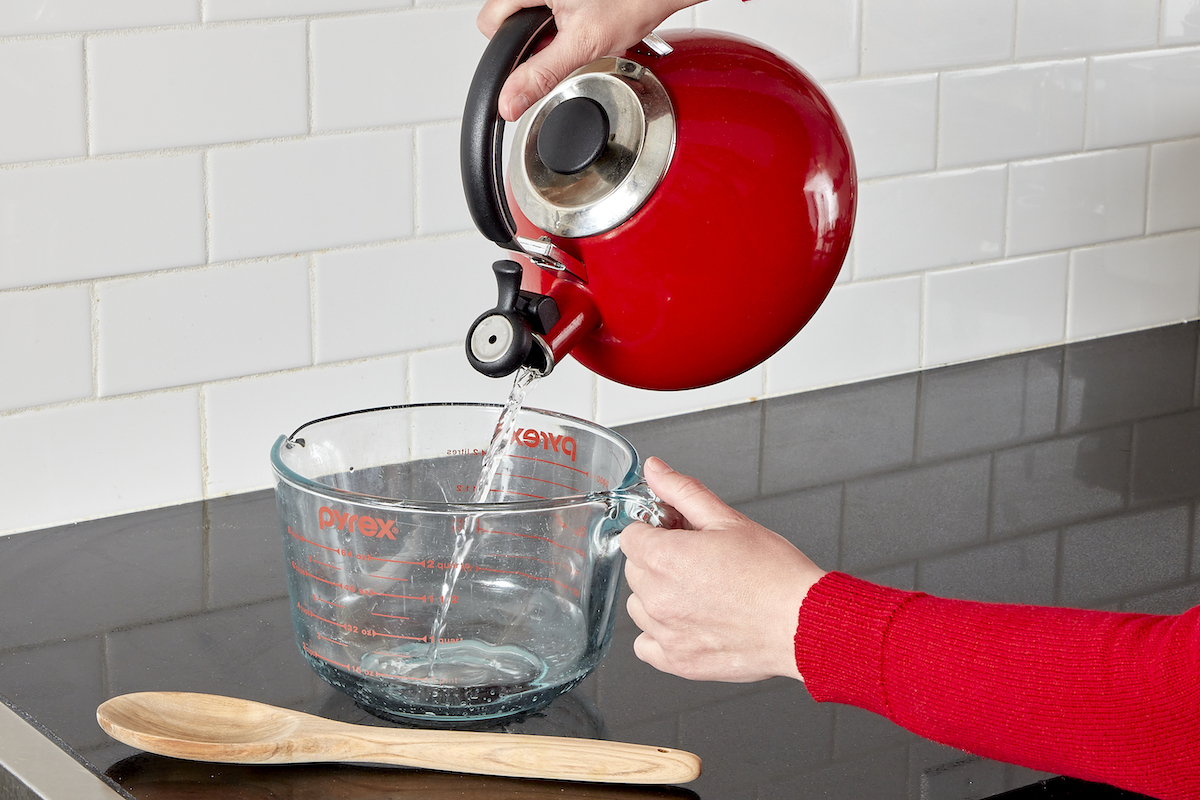
You don’t have to boil water before using it to prepare hummingbird nectar. If the water is safe for you to drink without boiling it, it’s okay for the birds as well. However, if your tap water has a strong taste or odor, indicating added chemicals or other contaminants, it’s best to use bottled or purified water—but not distilled water.
Whatever type of water you use, warm it up by running the tap or heating the water in the microwave or teakettle until it’s hot enough to easily dissolve sugar.
Step 2: Add the sugar.
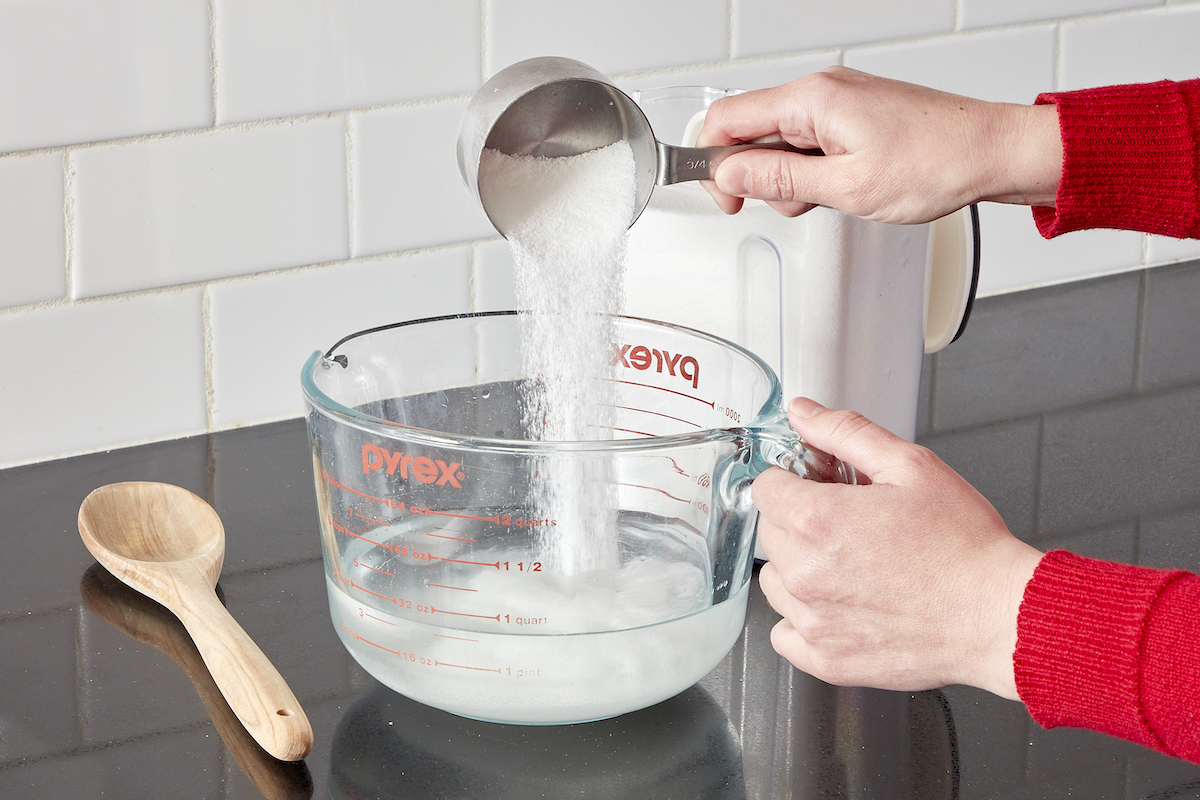
There’s no big secret to how to mix hummingbird food: Once you have your hot water, it’s time to add sugar. Use regular refined white sugar, not honey, artificial sweeteners, brown sugar, or other sugar products, all of which can be difficult for hummingbirds to digest.
The correct sugar to water ratio for hummingbird food is 1:4, or ¼ cup of sugar to 1 cup of hot water. Increase or decrease the quantities as desired, but make sure you stick to the 1:4 ratio.
There is no need to add supplemental vitamins or red food coloring to the food, either. The sugar doesn’t have to be red for hummingbirds to find it, and many wildlife and bird specialists feel that red coloring might be harmful to the hummer’s health.
Mix your nectar solution thoroughly until all sugar is completely dissolved, and let the nectar cool to room temperature.
Step 3: Fill the feeder and hang it in an optimal location.
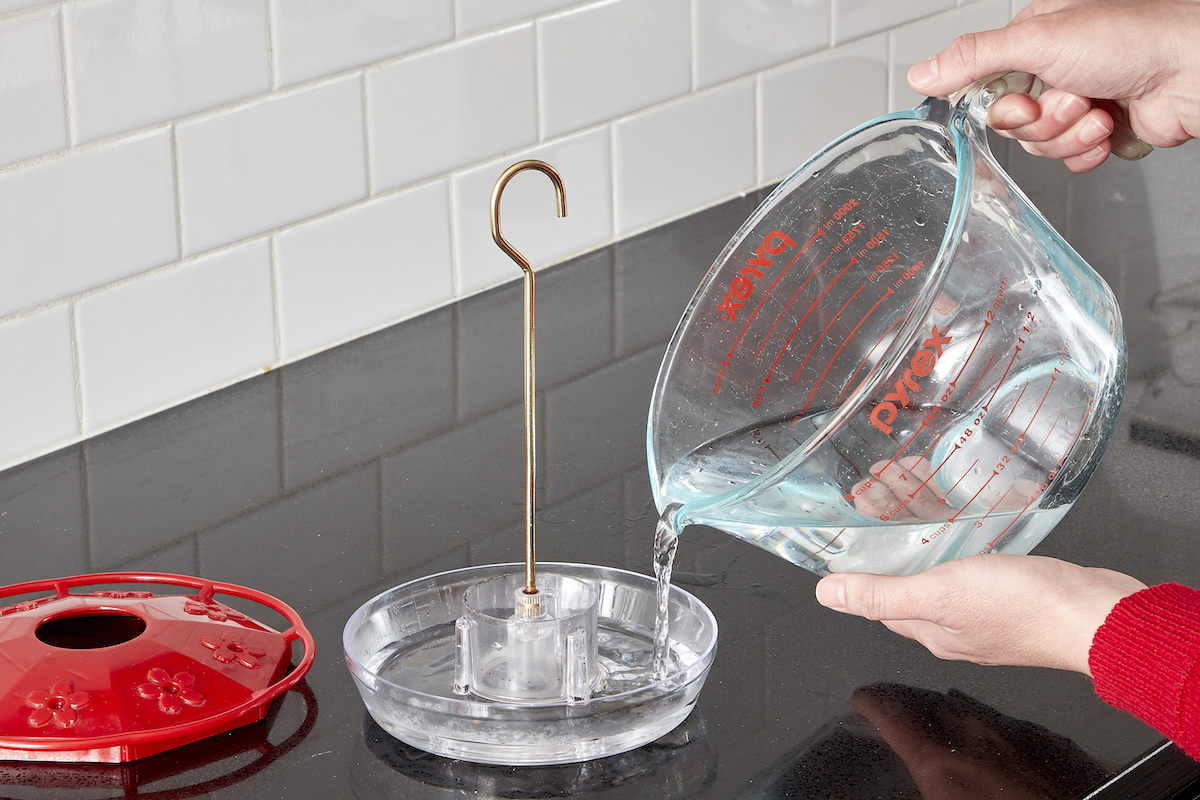
Use a funnel, if you need one, to pour the nectar into your hummingbird feeder. It’s best to do the pouring over the sink to catch any sugary drips. Wipe away any solution from the outside of the feeder before hanging it outdoors.
The best spot to hang your feeder is a location that’s easy for you to see—you’ll want to enjoy seeing your feathered visitors, after all—but not so exposed that the birds don’t feel safe. Ideally, the feeder should be no more than 10 to 15 feet away from a tree or large shrub that offers the hummingbirds a spot to perch while conserving energy or hiding from potential predators.
You want passing hummingbirds to be able to spot the feeder, so don’t bury it in a heavily shaded spot (some dappled afternoon shade is fine). To draw the most visitors, choose a location that isn’t too close to other bird feeders, is high enough so cats can’t leap up toward the hummers, and isn’t too close to glass doors or windows. Birds are easily confused by reflections from glass and are frequently injured or even killed flying into windows or doors.
RELATED: Attract More Hummingbirds to Your Yard by Avoiding These 10 Common Mistakes
Step 4: Store extra hummingbird food in the refrigerator.
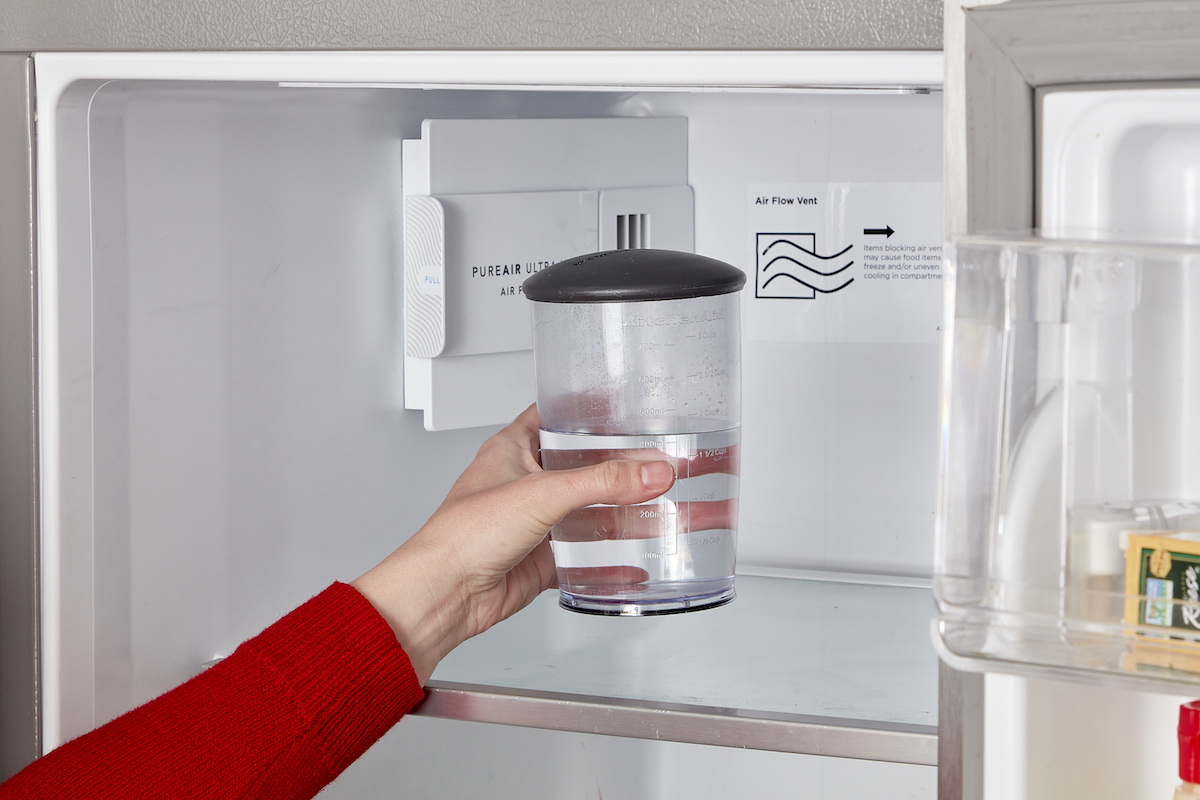
It’s convenient to mix up a big batch of hummingbird nectar and store the extra in your refrigerator to use as needed. You can store hummingbird food for up to 2 weeks in the fridge. If the nectar turns cloudy, develops a sour or “off” odor, or has obvious spots of mold, it needs to be tossed. Don’t fill your hummingbird feeders with food that’s gone bad.
Step 5: Clean the feeder regularly.
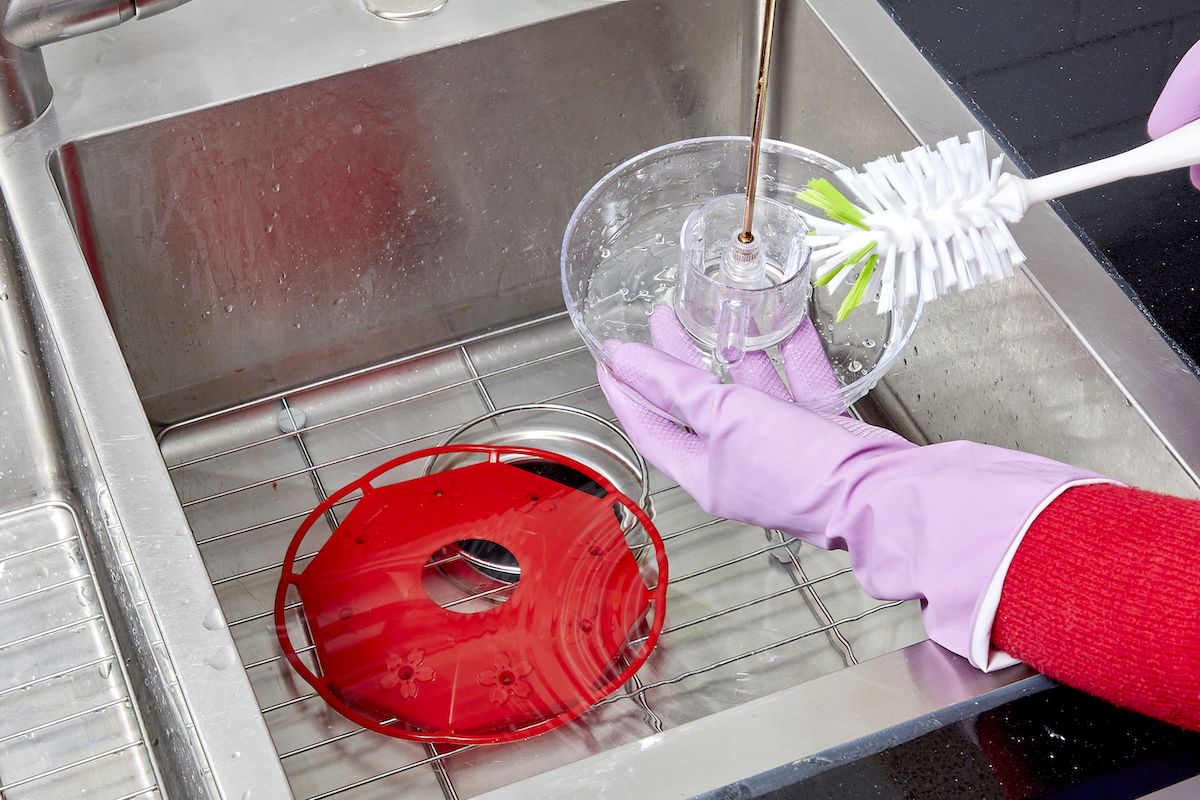
Many hummingbird lovers wonder, how often should you change hummingbird food in summer? It’s a good idea to fill your hummingbird feeder with only as much food as the birds are likely to consume in a day or so, as the nectar quickly spoils and can even ferment when it’s warm. Even if the feeder isn’t empty, don’t go longer than 2 days in hot weather and 5 days when it’s cool before dumping out remaining nectar and cleaning the feeder thoroughly.
You should clean a bird feeder every time you refill it. Disassemble the feeder—usually the bottom will screw off—and wash all parts with warm water and a gentle dishwashing liquid. If necessary, a bottle brush makes it easy to reach all the way down inside the feeder. Pay special attention to the feeding ports, which often become crusty or moldy. If necessary, use a pipe cleaner or an old toothbrush to scrub away any debris.
Rinse all parts of the feeder thoroughly with clean water until no soap residue remains. Let the feeder air-dry or dry it with a clean towel before refilling it and hanging it back outdoors. Your feathered friends will thank you for protecting their health by keeping their feeder clean.
Final Thoughts
From the youngest of children to the oldest of adults, just about everyone gets a thrill watching the aerobatics, mid-air hovering, and rapid flight of a hummingbird. By following the steps outlined above, you can easily mix your own hummingbird food that will entice these tiny, beautiful birds into your backyard for an up close and personal view. If these little daredevils enthrall you, you’ll want to learn these amazing facts about hummingbirds!
